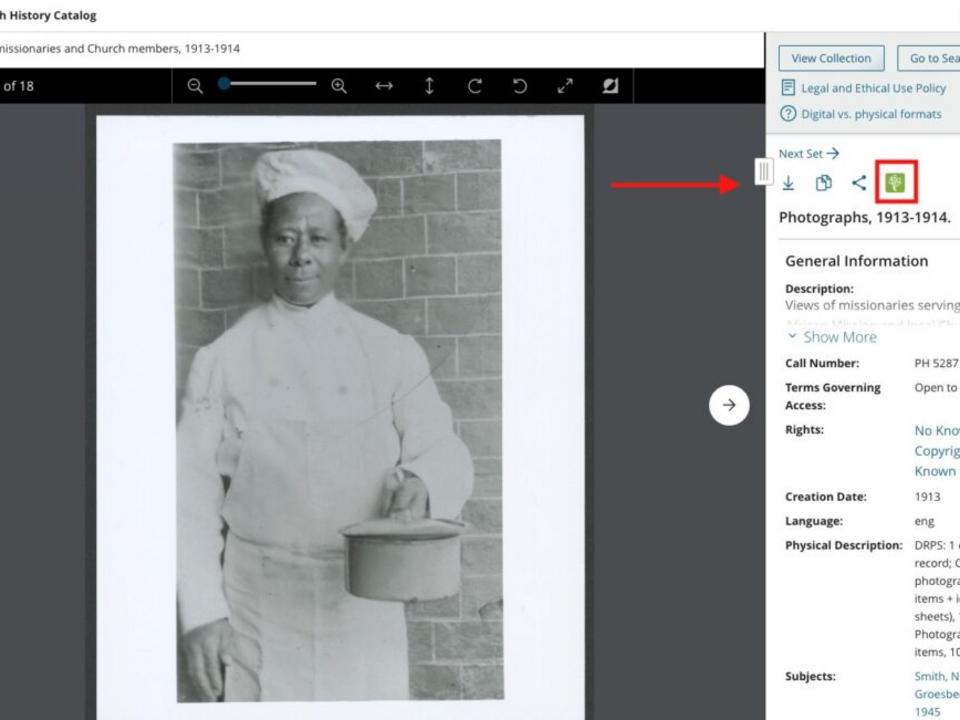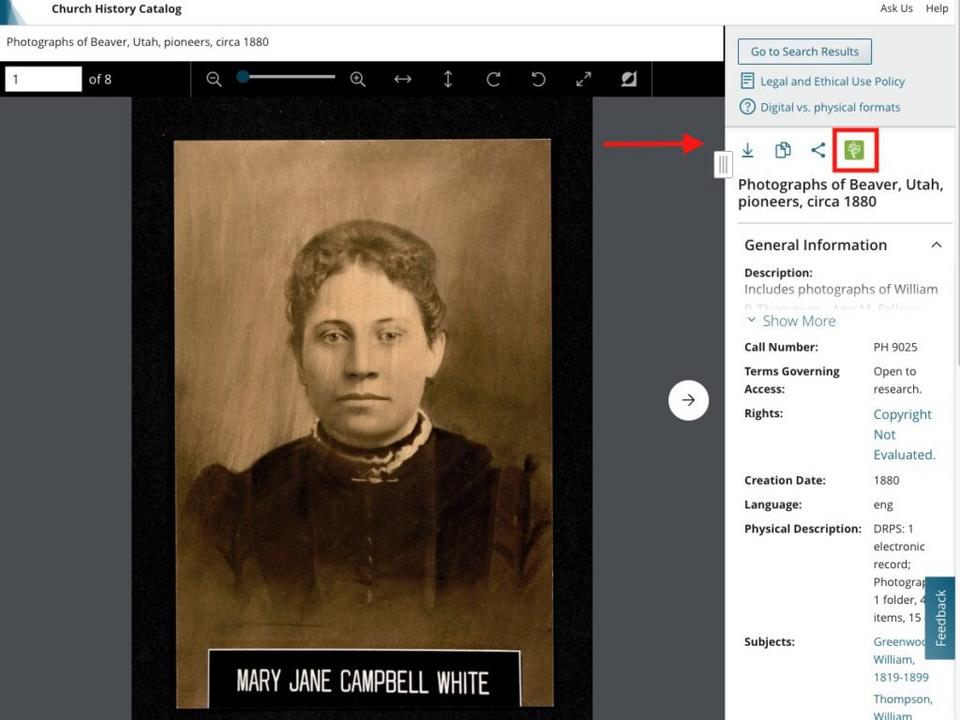
Church History Catalog FamilySearch 4
This photograph of Mary Jane Campbell White from the “Photographs of Beaver, Utah, pioneers, circa 1880” collection in the Church History Catalog can be attached as a source to FamilySearch using the family tree icon on the right. Screenshot of the Church History Catalog, courtesy of Church News.All rights reserved.This story appears here courtesy of TheChurchNews.com. It is not for use by other media.
By Sydney Walker, Church News
Using the Church History Catalog to research family history research just got easier.
Earlier this month, the Church History Catalog added a feature that enables users to easily attach a source to an ancestor’s page on FamilySearch.
The goal of this feature is to help people record and share accurate stories about their ancestors based on sources, said Keith Erekson, director of the Church History Library.
For example, someone may tell a story about an ancestor that comes from a newspaper article found in the Church History Catalog. “That’s where the adding the source function comes in — it pulls information from that newspaper and makes it a source in the Family Tree,” he said.
What Is the Church History Catalog?
While the Family History Library collects biographical records focused on identifying individuals and discovering vital statistics, the Church History Library collects materials specifically focused on the history of the Church and religious experiences of its members, according to the Church History Catalog’s “Help” section.
Once someone finds an ancestor in the Family History Library (or by using FamilySearch), the Church History Library (or using the Church History Catalog) can help them better understand their ancestor’s place in Church history.
The Church History Catalog is a searchable list of all the historical records in the Church History Library.
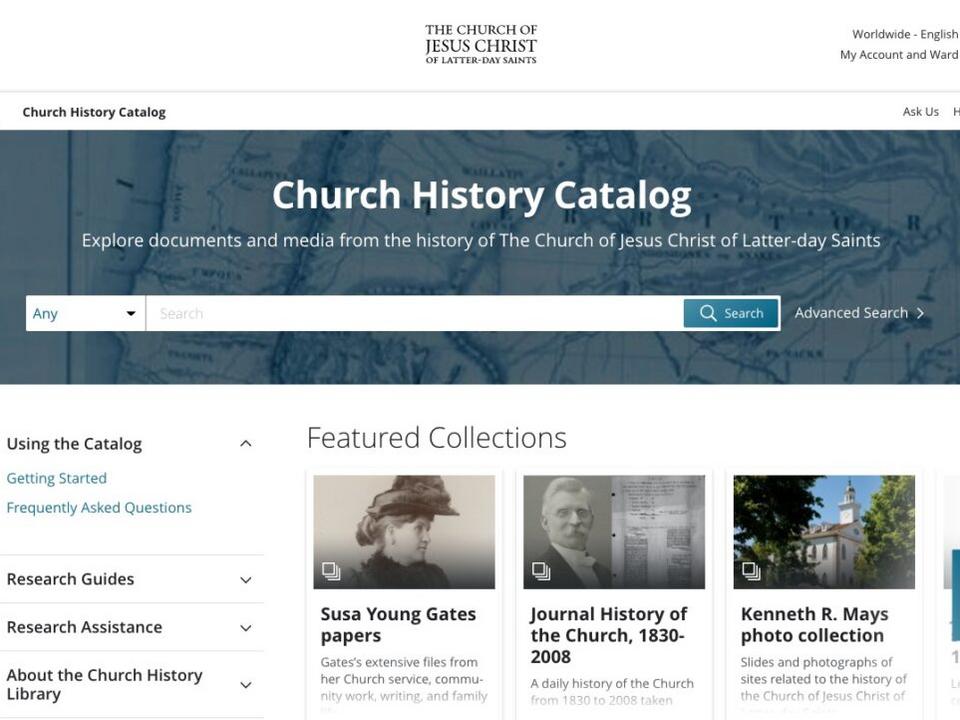
Church History Catalog FamilySearch 1
Earlier this month, the Church History Catalog added a feature that enables users to easily attach a source to an ancestor’s page on FamilySearch. Screenshot of the Church History Catalog, courtesy of Church News.All rights reserved.“We gather all of the materials created by the Church and many outside materials created about the Church. The catalog is the place where you can see everything that we have,” Erekson said. The catalog contains materials such as documents, letters, meeting minutes, photos, video and audio files."
“We’ve digitized millions and millions of images that you can view right through the catalog,” he added. In fact, the Church History Catalog contains more than 19 million digitized assets, which means these materials have been scanned and uploaded so someone can read them. New materials are constantly being added.
Russell Lynch, a FamilySearch project manager who coordinates with the Church History Department, said this new feature will be beneficial for both Church History Catalog users and FamilySearch users.
“If you’re using FamilySearch, you might discover a source in the Church History Catalog that no one knew existed,” he said. “And then the reverse, if people are using the Church History Catalog, they can then learn more about that person in the Family Tree.”
Using the Feature
Joel Hills Johnson is known for being the author of the well-known hymn “High on the Mountain Top.” Born in 1802 in Massachusetts, Johnson was baptized a member of the Church in Ohio, crossed the plains in Willard Richards’ handcart company and later founded Enoch, Utah.
A search in the Church History Catalog for Joel Hills Johnson reveals a letter he wrote to his son Nephi. Johnson informs him of the death of Nephi’s 12-year-old half-sister Mary and refers to Joseph Smith, plural marriage and the Johnson family.
“His descendants might be interested in reading this letter that he wrote, to be able to see his handwriting and just learn about some of the conditions of the time,” Lynch said.
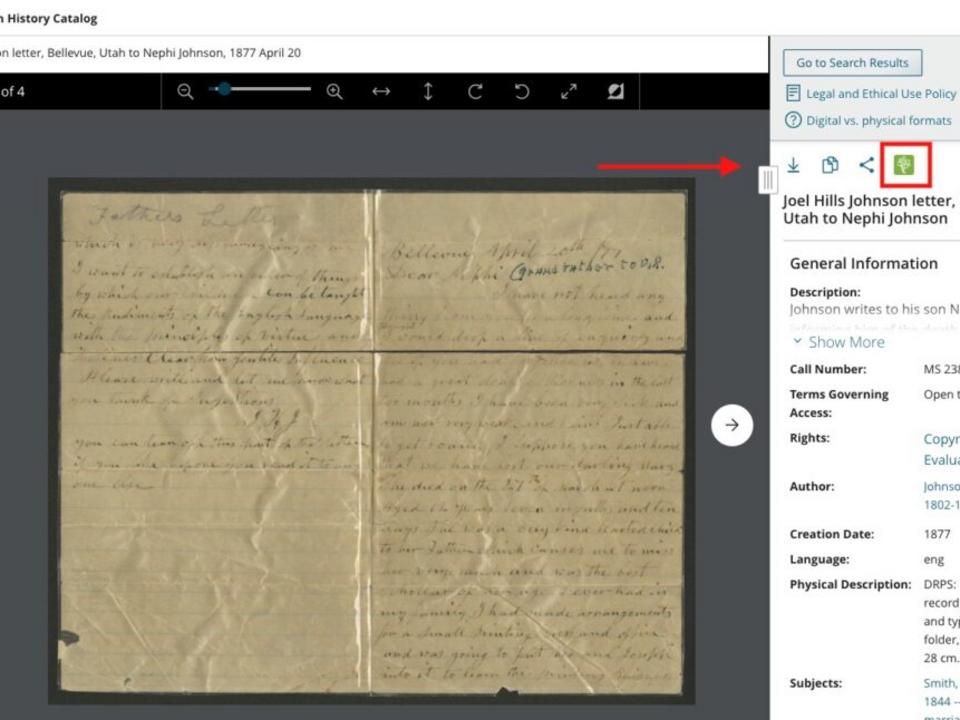
Church History Catalog FamilySearch 2
A search in the Church History Catalog for Joel Hills Johnson reveals a letter he wrote to his son Nephi. The family tree icon on the right side of the web page allows users to attach the source to FamilySearch. Screenshot of the Church History Catalog, courtesy of Church News.All rights reserved.Options on the right side of the web page include icons to download, copy the citation, share, or attach as a source in FamilySearch. Clicking on the Family Tree symbol prompts a screen to enter the Person ID of the individual on FamilySearch.org. (Selecting “View Details” explains this process.)
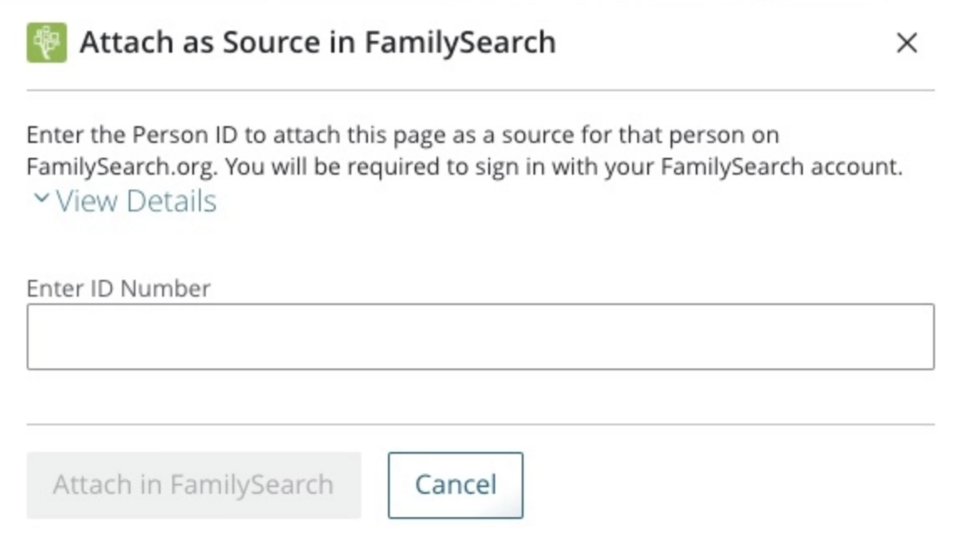
Church History Catalog FamilySearch 5
Clicking on the family tree icon on a record in the Church History Catalog prompts this screen to enter an ID number and attach the source to FamilySearch. Screenshot of the Church History Catalog, courtesy of Church News.All rights reserved.A more general search in the Church History Catalog can also yield valuable results. For example, when searching for South African Church members, the first collection that appears includes photos of missionaries serving in the South African Mission in 1913-1914 and local Church members from a photo album that belonged to missionary June B. Sharp.
Each photo in the collection has a family tree icon in the options on the right side. If someone discovers a photo of their ancestor in the collection, they can select the icon and attach it as a source to FamilySearch.
Copyright 2020 Deseret News Publishing Company
